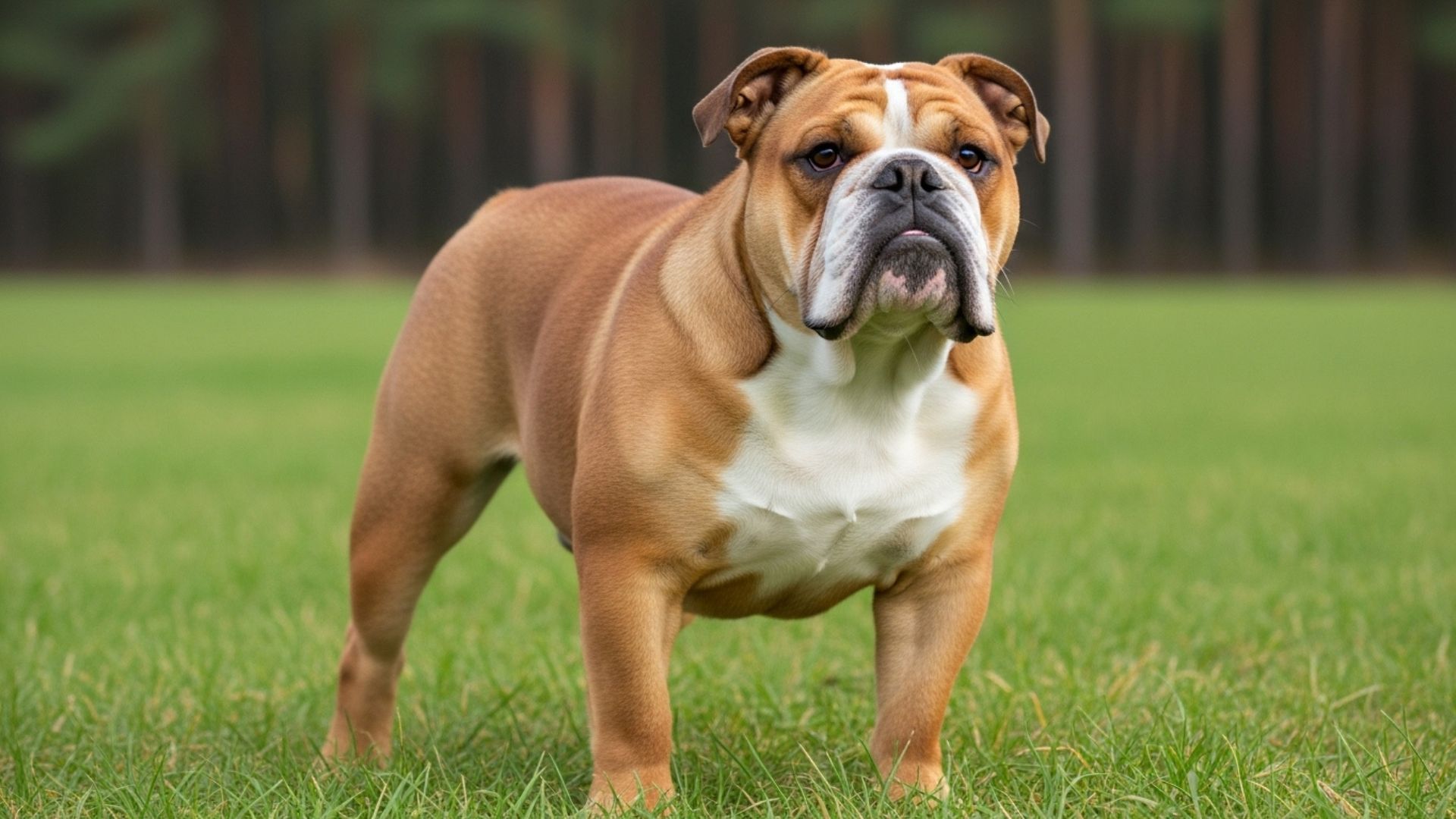Short-snouted dogs have a charm that’s hard to resist—their rounded faces, tiny noses, and expressive eyes give them an appearance many dog lovers find irresistibly cute. This “compact snout” look has grown wildly popular, shaping trends in modern dog ownership.
But behind those adorable features lies a fascinating bit of anatomy: these breeds have shortened skulls, giving them the signature flat or smooshy facial structure. While this trait adds to their appeal, it also plays a major role in how these dogs breathe, cool themselves, and experience the world around them.
Because of their unique head shape, many compact-snouted dogs face certain physical challenges. Their narrowed nostrils and shortened airways can make breathing more difficult, especially during exercise or hot weather.
Some may snore, snort, or tire quickly, all due to the limited space within their shortened skulls. Still, despite these obstacles, countless short-snouted breeds live full, joyful lives and remain devoted companions adored for both their looks and personalities.
In this article, we’ll explore what it really means for a dog to have a cute, compact snout—from understanding the anatomy behind their appearance to recognizing important health considerations.
Dog Breeds With Cute, Compact Snouts
1. Pug

Often called the “Dutch Mastiff” in historical texts, the Pug is instantly recognizable by its big, round head, soft wrinkles, and endearing flat face.
According to the AKC, the Pug—once a mischievous favorite of Chinese emperors and later a symbol of Holland’s royal House of Orange—is now cherished by countless admirers around the world.

As one of the most iconic brachycephalic breeds, the Pug’s compact snout is a major part of its charm, giving it that cute, smushed look beloved by many. However, this same facial structure makes them prone to BOAS, so they thrive in calm environments and require mindful monitoring during warm weather.

Their adorable snorts and snuffles may sound sweet, but they often signal restricted airflow, making low-intensity activity best for this gentle, couch-loving breed. Short play sessions and relaxed strolls suit their lifestyle, especially since they’re more inclined toward cuddling than vigorous exercise.
Because these dogs are easy to overfeed and quick to gain weight, keeping their portions controlled is essential to protect their breathing and overall comfort. Their affectionate personalities and expressive eyes make them treasured pets, especially in smaller homes.
Fun fact: Pugs often “snuffle like little pigs,” a sound linked to their difficulty breathing normally.
2. French Bulldog
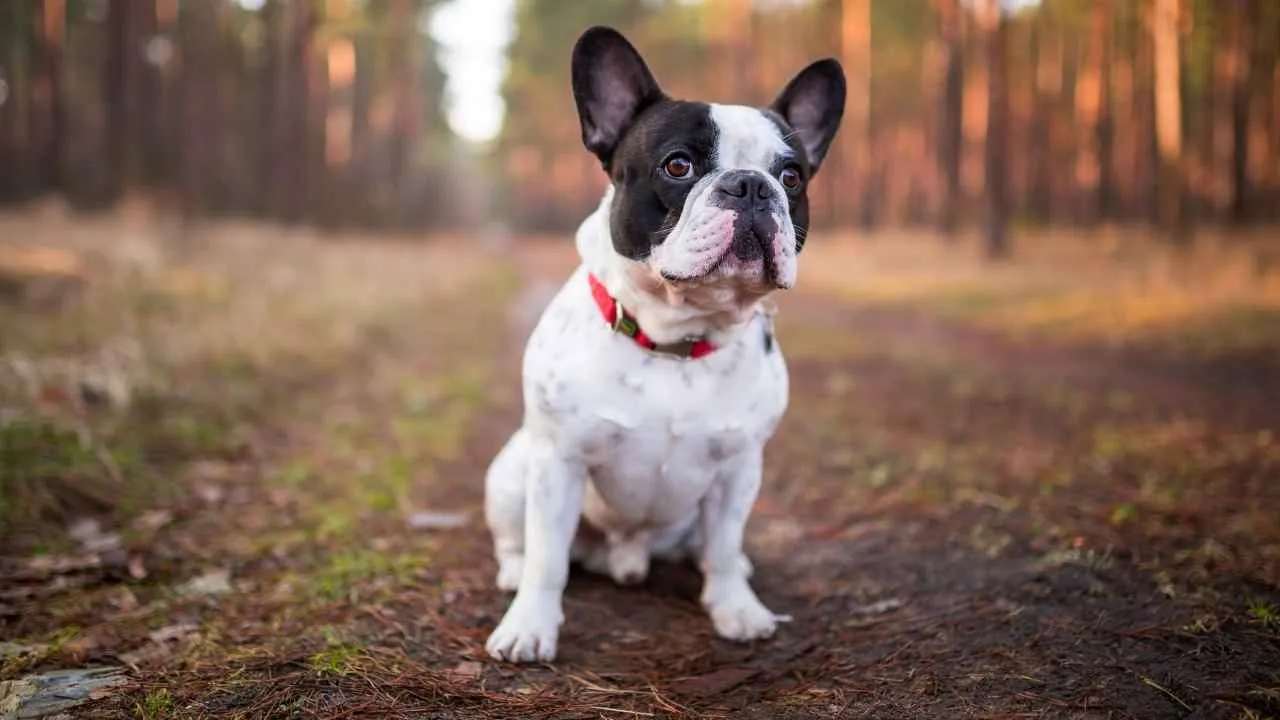
The French Bulldog—often called the Frenchie—is instantly recognizable by its bat-like ears, square head, and adorably shortened snout.
According to PetMD, French Bulldogs are described as cheerful, laid-back pups that make wonderfully affectionate companions.
This compact companion breed has become the most popular dog in the U.S., valued for its expressive face and affectionate, easygoing nature.
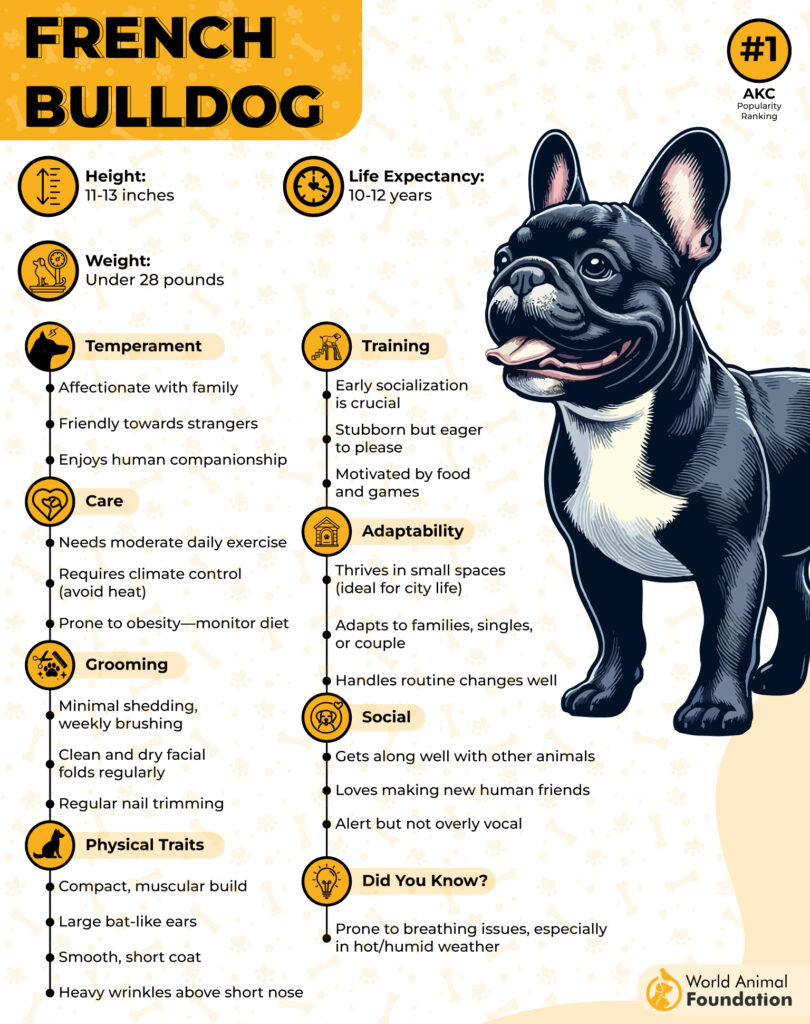
As a classic brachycephalic breed, the Frenchie’s compact snout gives it its signature “cute” appearance but also contributes to breathing limitations, especially during exercise or hot weather. Compared with other medium and large compact-snout dogs, Frenchies are lower-energy and thrive in homes where activity remains gentle and controlled.
Because their shortened airway can make cooling difficult, Frenchies benefit from structured routines that avoid strenuous workouts. Short, supervised play sessions indoors or in shaded outdoor areas help them stay comfortable while still meeting their moderate exercise needs.
Supportive conditioning—such as maintaining a healthy weight, offering ample rest breaks, and prioritizing cool environments—helps French Bulldogs manage their respiratory challenges while enjoying daily life with their families.
Fun fact: Their snub nose is considered “extreme brachycephalic conformation,” a major reason this breed often experiences chronic respiratory distress.
3. English Bulldog
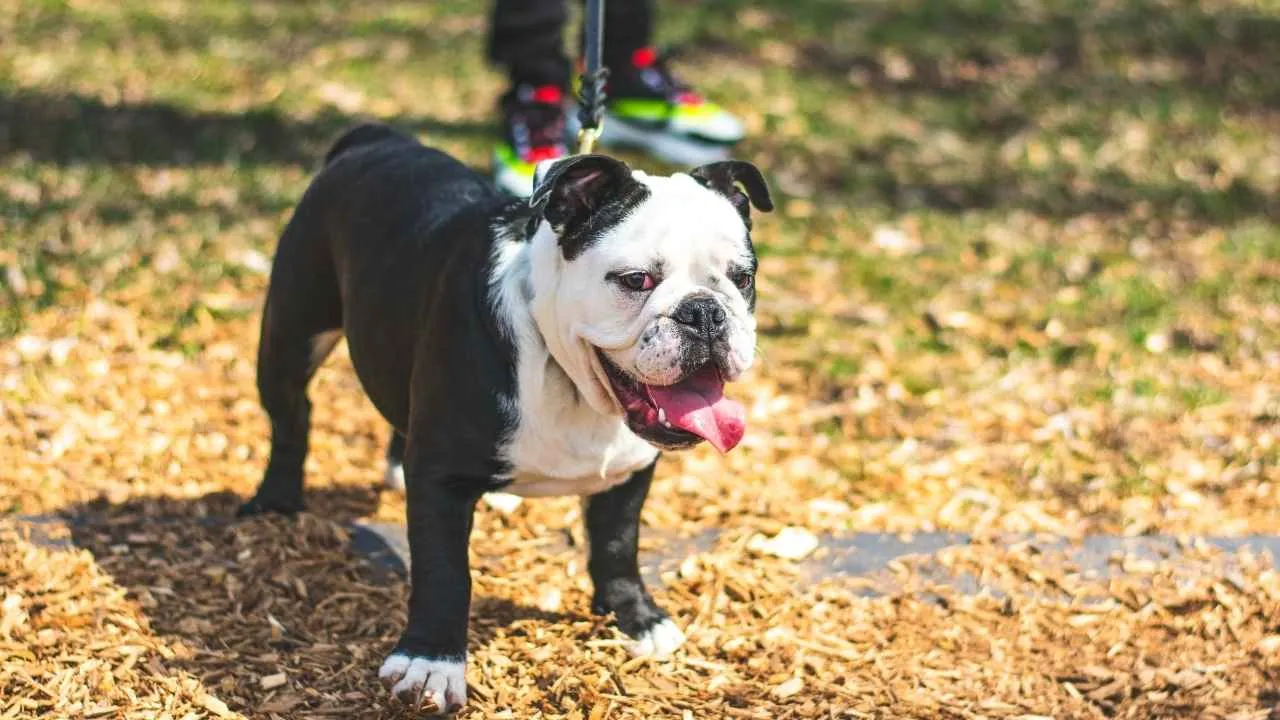
Often called the British Bulldog, this instantly recognizable breed stands out with its loose skin, deep facial folds, and famously short snout.
According to Hill’s Pets, the English Bulldog is described as having a kind and gentle temperament. This reliable and family-friendly breed is loving toward most children and naturally seeks human attention.
Like many flat-faced dogs, Bulldogs have an expressive, comical charm that pairs with an affectionate and attention-loving personality. Their snub nose contributes to their signature snorts and snores, adding to the endearing presence that makes them beloved family companions.
These short-snouted pups often prefer a relaxed lifestyle, thriving on human interaction rather than strenuous play. Their compact airway structure means they can overheat easily, so calm indoor activities and a cool environment help keep them comfortable and happy.
Because they are prone to skin-fold irritation and certain respiratory challenges, consistent facial care and mindful exercise routines are essential. Their natural protectiveness and sweet temperament make them loyal housemates.
Fun fact: many English Bulldogs require artificial insemination and cesarean births due to their unique anatomy.
4. Boston Terrier

Also known as the American Gentleman, the Boston Terrier is recognized for its tuxedo-patterned coat, bright expression, and compact, square build.
Originally called “Round Heads,” this U.S.–developed breed blends bulldog toughness with terrier charm, resulting in a companion celebrated for its dapper look and lively spirit.
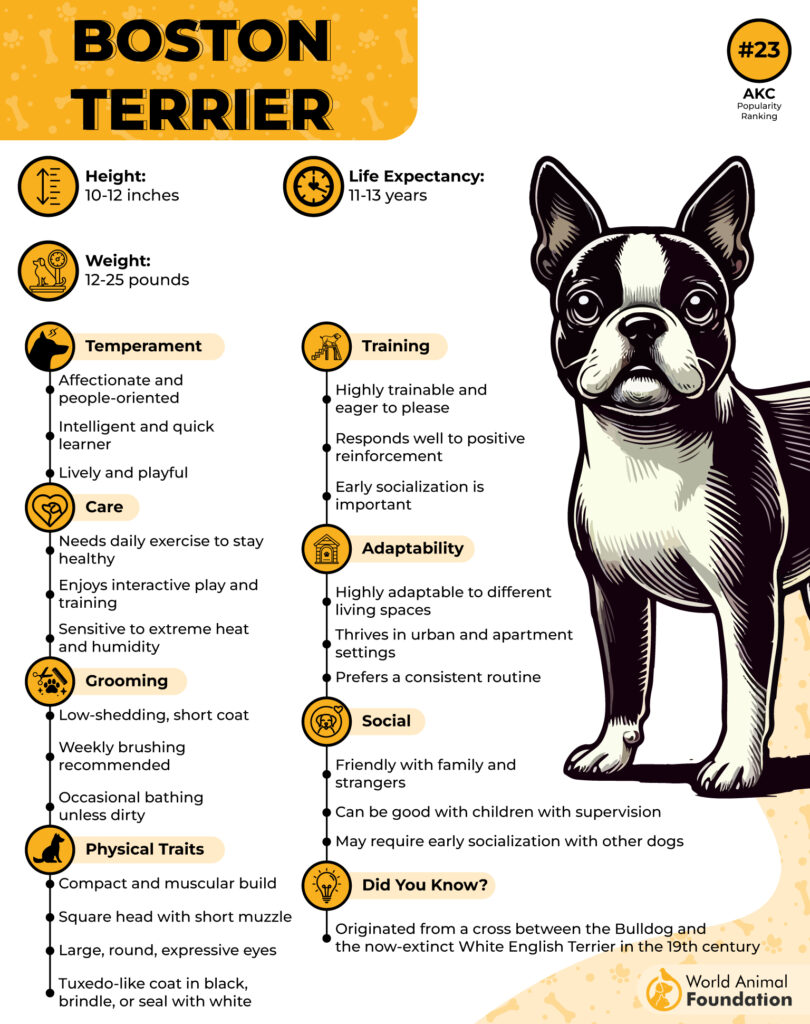
Because it’s a brachycephalic breed, the Boston’s short snout contributes to occasional airway challenges, especially during heat or intense activity. Their flat facial structure also makes panting less efficient, so they thrive in moderate climates and benefit from monitored exercise routines.
Their prominent, wide-set eyes add to their adorable appearance but require careful protection to avoid scratches or irritation. Regular checks, along with avoiding rough play, help reduce the risk of injury—an essential step for preserving eye health in short-snouted companions.
Maintaining a healthy weight is also key, as extra pounds can intensify breathing strain. Consistent, low-impact activity and portion-controlled meals keep them comfortable and energetic.
Fun fact: The Boston Terrier is the official state dog of Massachusetts.
5. Shih Tzu
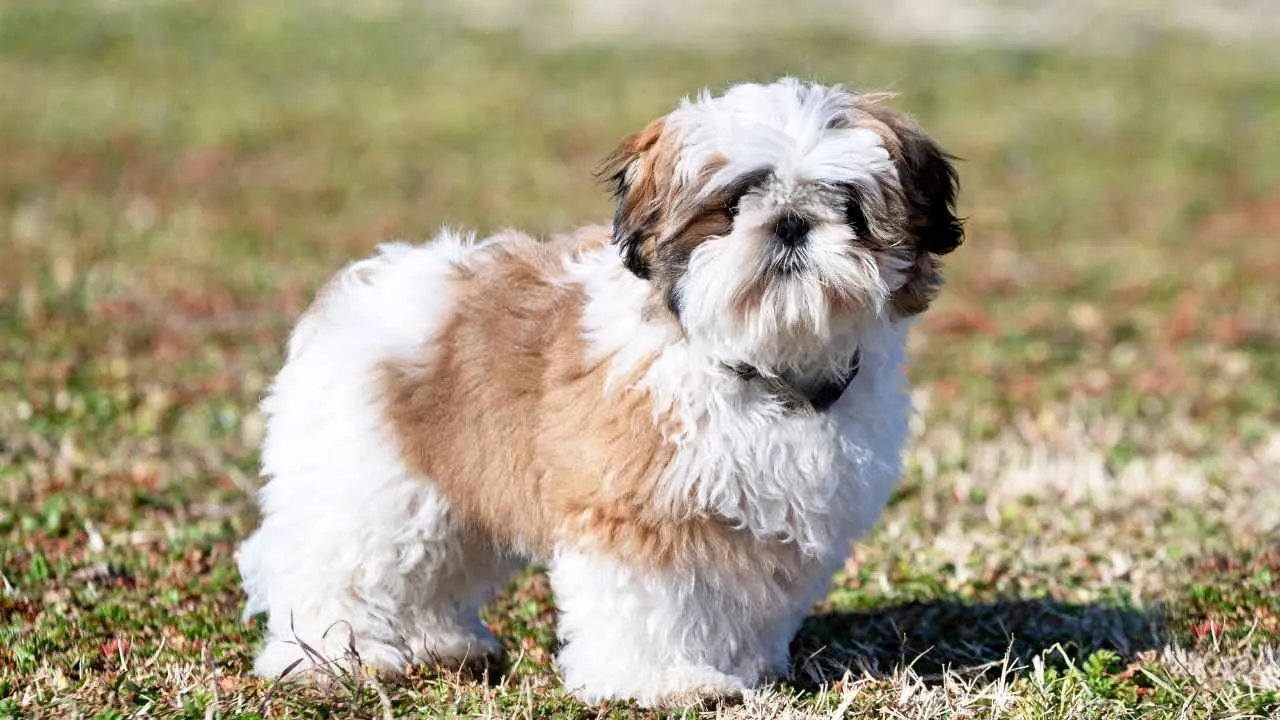
Also known as the “Lion Dog,” the Shih Tzu is a tiny companion breed admired for its round face, large eyes, and compact snout. Originating from Tibetan lines and cherished by Chinese royalty, this elegant toy dog carries itself with a proud, regal air and an affectionate, family-friendly nature.
Their short muzzle contributes to their irresistibly cute look, but it also makes mindful care essential. To keep brachycephalic pups comfortable, owners should monitor breathing during warm weather and provide cool, restful spaces when temperatures rise.
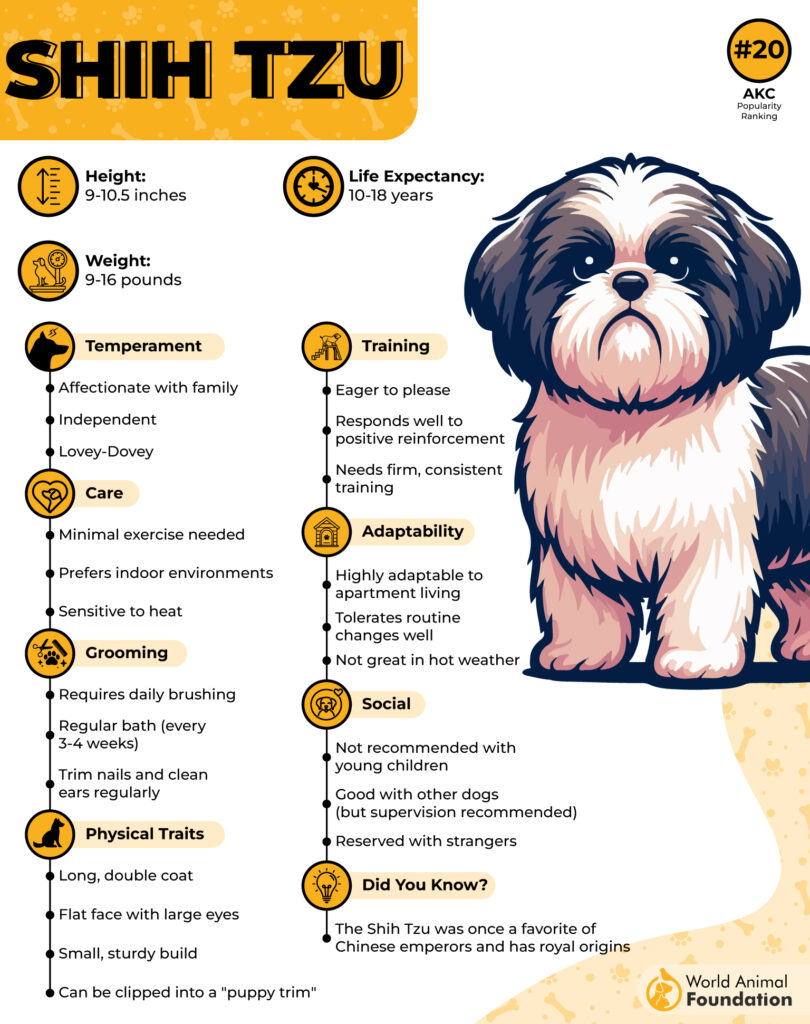
Gentle exercise is ideal for these flat-faced dogs, as strenuous activity can place stress on their respiratory system. Short daily walks, indoor play, and avoiding outdoor heat support healthy airflow and reduce the risk of overheating.
Because Shih Tzus have shallow eye sockets and facial folds, regular tear cleaning and facial hygiene help prevent irritation. Consistent grooming and early socialization also support their overall well-being.
Fun fact: they were once bred to resemble miniature lions for ancient Chinese royalty.
6. Cavalier King Charles Spaniel
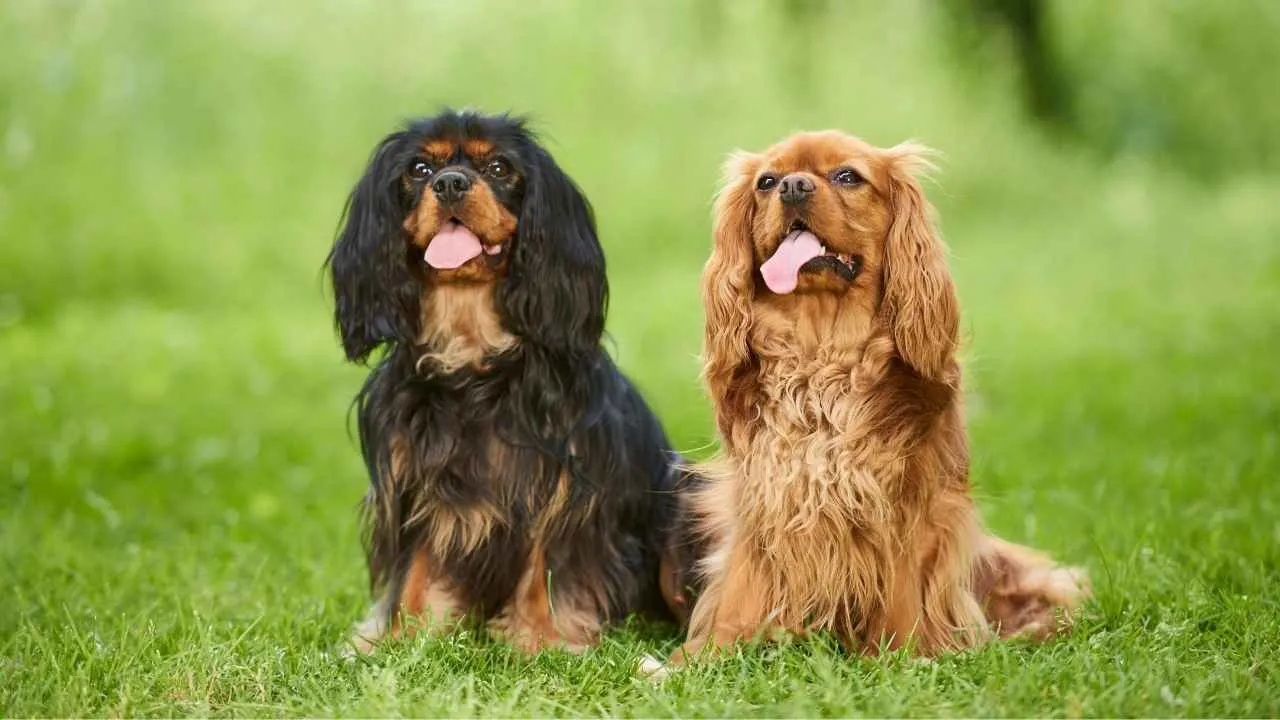
Often called the “Cavalier” or simply “CKCS,” this toy spaniel is cherished for its silky coat, bright expression, and compact, joy-filled face.
Although some debate whether they truly qualify as brachycephalic, their broad skull places them within the compact-snout category.
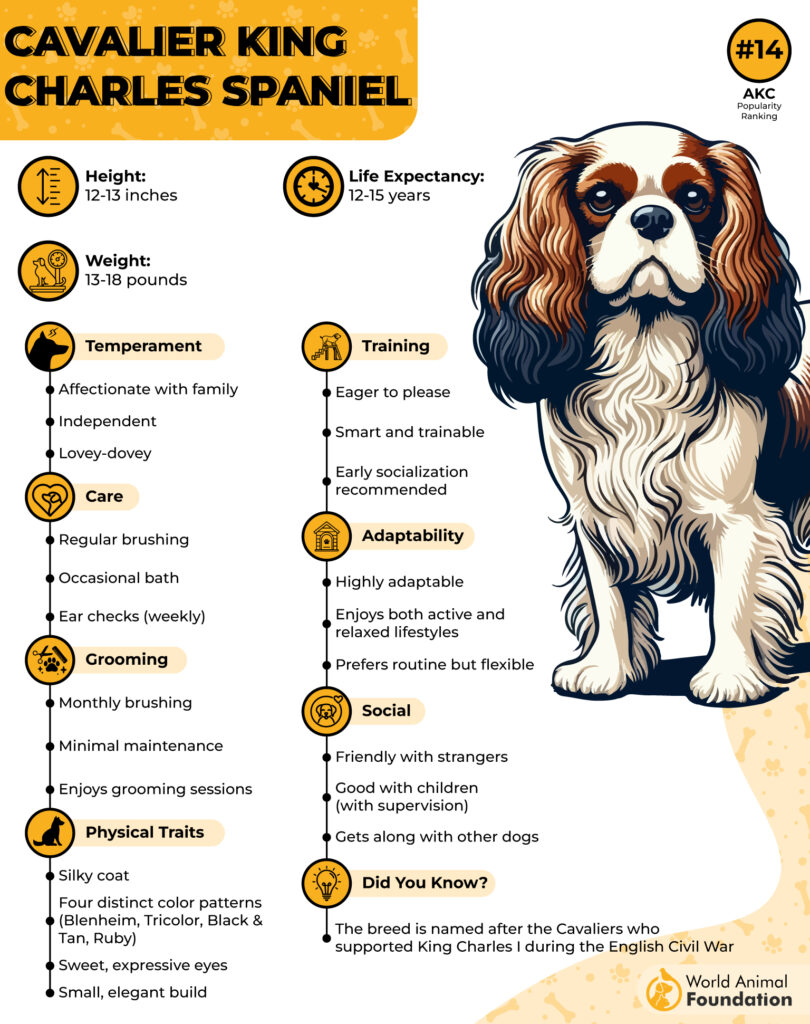
Their gentle, cheerful temperament makes them ideal for people wanting an affectionate breed that fits comfortably into many lifestyles. Cavaliers adapt easily—whether in an apartment or spacious home—and their moderate activity needs suit individuals looking for a low-fuss companion.
For families or first-time dog owners, their friendly nature and playfulness make day-to-day routines enjoyable. They thrive with steady but not strenuous exercise, such as two short walks a day, and appreciate interactive play without demanding rigorous activity.
Because choosing a compact-snout breed means considering comfort, breathing, and coat care, Cavaliers are a great match for those seeking a manageable grooming routine and a dog that enjoys both quiet evenings and bursts of fun.
Fun fact: Their muzzle length has changed throughout history according to the preferences of each era.
7. Brussels Griffon

Often called the Griffon or Griff, the Brussels Griffon is instantly recognizable for its tiny frame, wide-set eyes, and distinctive short muzzle framed by a whiskery “beard.” This toy breed’s almost human-like expressions make it a standout among flat-faced companions.

Their compact snout gives them that signature adorable look, but like other brachycephalic pups, they can be sensitive to heat and humidity. Owners should keep outings short on warm days to help them breathe comfortably and avoid overheating.
Because their small noses can contribute to dryness or irritation, gentle grooming around the face helps them stay comfortable and clean. Their affectionate, clingy nature—often described as “Velcro-like”—also means they thrive best when they can stay close to their favorite person.
These expressive pups flourish in calm indoor environments, making them ideal for apartment living or families seeking a close, cuddly companion. With early socialization and positive guidance, they become confident, charming pets who adore attention.
Fun fact: Brussels Griffons were the inspiration for the Ewoks in Star Wars.
Conclusion
Compact-snouted pups bring a special charm to the dog world, offering expressive faces, quirky personalities, and a unique appeal that pet parents adore. While many brachycephalic dog breeds make wonderful companion dogs and lap dogs, it’s important to remember that their flat-nosed structure can come with health concerns such as breathing issues, dental disease, and even brachycephalic obstructive airway syndrome.
Whether you’re drawn to a rare breed like the Japanese Chin, a “monkey dog” with a thick coat, or flat-nosed dogs with floppy ears, understanding their needs helps ensure they thrive in hot and humid weather and alongside other pets or other dogs.
Choosing one of these affectionate breeds means balancing their cuteness with responsible care. Active dogs and gentle giants alike benefit from attentive monitoring, routine vet visits, and guidance from a reputable breeder who prioritizes health.
As you explore other breeds beyond those featured here, keep in mind that compact-snouted pups can be delightful additions to your home—provided their potential health problems are met with knowledge, patience, and love.


